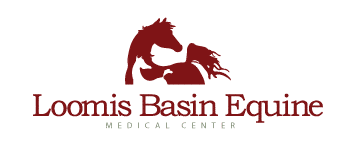
by LBEMC Admin
Share:
ARTICLE: PROTECTING YOUR HORSE AGAINST SUMMER NUISANCES
Drought conditions and summer heat conspire to bring humans and domestic animals into closer contact with nuisances and disease vectors such as mosquitoes, skunks, and rattlesnakes. These pests are seeking the same limited water sources, such as a decorative fountain, a leaking outdoor faucet or a pond in a horse pasture.
Horse owners recognize that their animals are exposed to mosquitoes, skunks, and rattlers and that there are several steps than can be taken to mitigate the risk. Vaccination is one of these steps.
MOSQUITOS

This pest is responsible for spreading West Nile Virus and both Eastern and Western Equine Encephalomyelitis (Sleeping Sickness). Humans can also acquire these diseases from a mosquito bite but they do not acquire them from a horse, nor will a horse spread them to another horse. Mosquito control officials in California have seen an uptick in trapped mosquitoes testing positive for West Nile in 2015 to date over the same period in 2014.
In 2014 in California, there were 801 human cases of West Nile Virus disease with 31 deaths. There were only 15 cases of the same disease reported in horses. The high point in horse cases was 2005 with approximately 500 affected equines. At least one of the factors in the diminishing number of horse cases versus the human cases is the availability of an equine vaccine. This vaccine is best given to horses in the spring so that peak immunity will be on board during the West Nile “season” (June-September). The initial vaccine for a horse should be boostered in 3-4 weeks, but in subsequent years, it can be given annually if given in the spring.
SKUNKS

These odiferous, strikingly colored mammals are closely related to the European polecat. This smelly character and the bat are the two primary reservoirs for rabies in California. Our region of California is considered “endemic” for rabies because the virus is kept alive and constantly present in these two reservoirs. When drought conditions persist, domestic animals and wildlife find themselves sharing smaller and smaller areas where water is plentiful and the rabies virus is more likely to be transmitted into domestic animals.
Like tetanus, sleeping sickness, and West Nile virus vaccines, the rabies vaccine is considered a core vaccine for horses in our region. Although rabies is not as common as West Nile disease, it is transmissible from a rabid wild or domestic animal to other animals or to humans. The bite of a rabid animal is fatal unless the victim is either a rabies vaccinate or medical treatment is instituted promptly. The vaccine is given annually and must be given by a veterinarian. Another advantage of vaccinating against rabies is that a horse presenting with signs of a neurological disease (who is a rabies vaccinate) will be considered much less likely to be rabid. This allows veterinarians to move more rapidly to consider other diagnoses.
RATTLESNAKES


